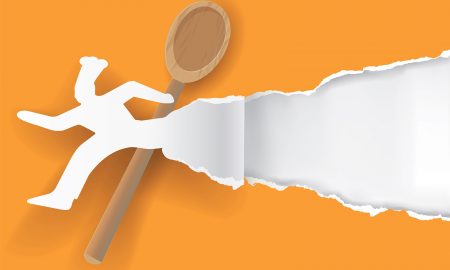
Today we’d like to introduce you to Molly MacDonald.
Molly, we appreciate you taking the time to share your story with us today. Where does your story begin?
In April 2005, as I was sitting in a taxi on my way home from pitching a marketing campaign to Major League Baseball, I received the call that started with “I’m sorry… “and ends with “you have breast cancer,” initiating me into the sorority no one “rushes” to join, SURVIVOR; yet once in, one hopes to remain a member for decades. The disease, while unlikely to take my life, took my livelihood.
Unemployed and unemployable while I underwent treatment, the addition of a $1,300 monthly COBRA premium catapulted my family into financial freefall. Within months, our home went into foreclosure, and I found myself standing in line at a food bank to feed my five children. This toxic financial side effect of my breast cancer diagnosis – coined Cancer Related Financial Toxicity – would not be recognized or named until 2013, by two esteemed researchers at Duke University, Doctors Yousuf Zafar and Amy Abernethy.
While sitting in the treatment waiting rooms, I met other working women in treatment experiencing similar financial challenges. Unable to find help, my quest to Get Help, became one to Give Help and The Pink Fund was born. The Pink Fund provides financial support to breast cancer patients in active treatment, covering cost-of-living expenses for housing, transportation, utilities, and health insurance premiums. Our 90-day financial bridge program pays up to $3,000 in bills directly to patients’ creditors.
Our program has been proven to impact treatment adherence, positively impact a patient’s mental and emotional health, all the while improving survivorship outcomes.
In 2012, with an annual budget of $168,000, Ford Motor Company’s breast cancer program, Warriors in Pink, invited the Pink Fund to become one of four charity partners, expanding our program to support survivors nationwide. As of June 2022, The Pink Fund has grown to provide significant financial support to breast cancer patients in active treatment, delivering $6 million in financial assistance to more than 3,200 patients and their families. One million was delivered in our current fiscal year ending June 30.
Since the pandemic, delayed screenings have resulted in later-stage diagnoses which may require longer and harsher treatment protocols, affecting patients’ ability to work. As a result, the Pink Fund has been identified as an essential service and is experiencing an increased request for support.
In 2022, the Pink Fund launched the REAL HOPE NOW™ Education and Advocacy Program. By reaching patients directly and educating them on how to navigate the financial impact of a breast cancer diagnosis, we will reduce the burden and stress faced by patients while they undergo treatment, improving treatment adherence and survivorship outcomes. This program provides a road map to guide patients through their breast cancer diagnosis, helping them avoid pitfalls that would exacerbate the effects of financial toxicity. As a patient advocate, I am invited to speak at healthcare conferences, sharing the lived experience of patients, giving them a voice to the healthcare industry. Through my work with the Pink Fund, I have become a sought-after speaker on the issue of overcoming patient affordability barriers. In the past four years, I have delivered keynotes and case studies, and sat on panels at several national healthcare conferences, including the Value-Based Cancer Care Conference in New York City, CBI’s Formulary, Copay and Access 2019 conference in San Francisco, and patient advocate conferences in Boston and Chicago. Additionally, I am a contributor to Breast Cancer Wellness Magazine on the topic of financial wellness and to the American Journal of Managed Care. Most recently, I have become active in the academic and public policy spheres, collaborating with Drs Reshma Jagsi, and Laila Garza to empirically examine the challenges of financial toxicity, with an aim to identify interventions to mitigate financial barriers to cancer care.
I’m sure you wouldn’t say it’s been obstacle-free, but so far would you say the journey has been a fairly smooth road?
My breast cancer diagnosis came during a time of job transition. Following a financially devastating divorce, my life was finally being pulled together as I was about to start my new job. I used the two weeks between the end of one job and the start of my new job to have my annual physical which included that one test we women all relish, the mammogram. With no family history, never a lump or bump or call back, I had no concern that I would join the ranks of over 3 million women in the United States, Breast Cancer Survivor.
While I underwent six months of treatment, I was unemployed and unemployable. Without my income and the addition of a $1300 a month COBRA premium to ensure my access to care, our family went into financial free fall. Unable to find help, I imagined creating an organization that would help women pay their non-medical, non-negotiable basic cost of living bills to their creditors for up to 90 days. In 2006, with the help of my husband, and a handful of volunteers I launched The Pink Fund from my home. We traded a mid-century modern designed dining table for our heart and ribbon logo, persuaded a web designer to donate a website, and persuaded the health reporter for The Detroit Free Press to share our story, published on the front page of the Lifestyle Section of the paper October 2, 2006.
Through this journey, my sheltered upbringing and former financially privileged lifestyle helped me develop a stronger sense of empathy. I have learned that through meeting on paper, and occasionally in person, the diverse population of women, men, and families we serve, we can see the world from different perspectives, while understanding that all humans want the same thing, to be valued, respected and cared for. Caring for others is what we must do. My most significant challenge came within the first year of launching my an organization under a different name. When my first partners decided to go their own way excluding me from the organization I founded, I learned that nonprofits experience some of the same challenges as do for-profit businesses. Within a week, my husband and relaunched as The Pink Fund. I was grateful they did not take my heart and ribbon logo.
Developing a board of directors also brought many challenges. Early on, our initial board was composed of friends, some with strong personalities who operated outside our bylaws, resulting in resignations, to recalcitrant board members. I began to look for directors for whom the mission was central, who bring significant levels of education, experience, and wisdom to the mission. We are fortunate now to be building a diverse, inclusive, and national board of directors. Covid’s challenges pivoting our in-person meetings to Zoom has allowed me to cast a much wider net of potential directors and ambassadors. As we have grown, finding employees who have the education, experience, and passion for the mission has been, at times, challenging, and occasionally resulted in having to terminate some of those relationships.
I have also learned that timing is everything. My vision for the organization at the outset took time to implement. Had we experienced all that I wanted and still want, we would not have been ready and would have imploded. Despite setbacks and disappointments, I remind myself of the trite phrase, “When one door closes, another opens.”
Had I known that my dreams for this organization would take more than a decade to achieve, I might have quit, and frankly there was one time I told my husband I was quitting.
His response, “If you can’t handle this, then you are the wrong woman for the job and you need to step aside.” That single statement motivated to hang in, practice patience and not let emotion take control of current circumstances.
Thanks for sharing that. So, maybe next you can tell us a bit more about your business?
In 2022, 339,250 women will be diagnosed with breast cancer, and 20-30% of women diagnosed will lose their jobs. Patients undergoing treatment for breast cancer face mental, emotional, and perhaps most significantly, financial challenges. As of 2017, up to 73% of cancer patients reported experiencing financial toxicity. This long-term financial side-effect of breast cancer can follow patients and their families for years after treatment.
While countless breast cancer charities direct money toward health care initiatives and research to cure the disease, I understood the financial fight that patients faced. Every day patients choose between lifesaving treatment, and keeping the lights on, making the car payment, or rent. The Pink Fund offers an innovative solution to the day-to-day problems endured by breast cancer patients, providing Real Help for the Other Part of The Fight™. Throughout the years, the Pink Fund has proven to be a steadfast resource to breast cancer patients, never turning away qualified patients due to lack of funding. With a healthy cash reserve and accordion-style funding, the Pink Fund is able to pay larger bills, like housing, when funds are greater, and smaller bills when funds are lower. The core mission financial bridge program has, without interruption, served breast cancer patients in active treatment since the first bill payments was made in the spring of 2007.
The impact of the Pink Fund’s programs is best illustrated by the words of our recipient:
“I am so grateful for the assistance that I received from The Pink Fund. Being diagnosed with breast cancer and hearing it for the first time was devastating. While going through treatment, I realized everything I worked so hard for is at risk due to the inability to work, which is added stress. That time for me was faced with uncertainty. I was told about The Pink Fund by someone in my support group. I received a lot of support from the office. They were kind, patient, and reassuring. I was so relieved to receive assistance with car payments and rent. This has allowed me to mentally relax and relieved me of financial stress while fighting to beat cancer. This program has been a blessing and I am so thankful that there are people who care about helping cancer patients navigate day-to-day living financially during what can be a difficult time. The help from The Pink Fund has made that part easier allowing me to focus on getting well once again! Thanks to all who have helped and many, many blessings!” -Tonya
What are your plans for the future?
In the last two years, the Pink Fund identified several challenges brought about by COVID and pivoted accordingly, opening eligibility and providing new and improved outreach to ensure patients in underserved areas are aware and able to access our program. As we grow, it has become clear that patients are unaware of the intricacies of the health system and are in need of education on how to advocate for themselves.
Patients who may be “just diagnosed” must receive educational information on how to minimize the financial burdens of breast cancer treatment. A 2021 study conducted by Dr. Laila Gharzai, using Pink Fund patient data, identified patient knowledge gaps in treatment expectations, provider conversations, identification of resources, and support finding. By reaching patients earlier, educating them on how to navigate the financial impact of a breast cancer diagnosis, we will reduce the burden and stress faced by patients while they undergo treatment, improving treatment adherence and survivorship outcomes. To this end, we are launching a multi-pronged education initiative to inform breast cancer patients, nurse navigators, social workers, and breast oncologists of the support the Pink Fund provides. Initial efforts have been well received, positioning the Pink Fund to become a leader in the space of breast cancer patient advocacy and support.
While we are proud to have provided unceasing financial support to breast cancer patients, we recognize the importance of educating patients and their advocates on health and financial literacy during the earliest stages of their diagnosis.
We are committed to assisting patients and their families earlier to help cover immediate expenses. In the next fiscal year, we have set a goal to increase the number of applications by 20%, helping more than 400 patients and their families with $1.2 million in support.
In FY 2022-23, The Pink Fund will:
- Provide $1.2 million dollars in direct bill payments to creditors on behalf of 400 patients nationwide, with an emphasis on reaching underserved communities. • Launch an educational campaign to inform the public, healthcare providers, breast cancer patients, and advocates of the financial side effects of breast cancer, and the support The Pink Fund provides.
- Introduce an educational component to prepare breast cancer patients to be financial advocates for themselves from diagnosis, through treatment, to recovery.
- Market Pink Fund programs widely through social media and breast cancer patient advocacy conferences and networks.
Pricing:
- $120 (or $10 a month) can cover an utility bill, keeping the lights on and the water flowing.
- $360 (or $30 a month) can cover a health insurance premium and ensure access to treatment.
- $600 (or $50 a month) can cover a car payment or car insurance payment ensuring patients are able to get to treatment and run day to-day errands.
- $1,200 (or $100 a month) can cover a rent or mortgage payment, keeping patients in their homes as they undergo treatment.
- $3,000 can cover 90 days of non-medical cost of living expenses for a breast cancer patient in treatment.
Contact Info:
- Website: www.pinkfund.org
- Instagram: https://www.instagram.com/thepinkfund/
- Facebook: https://www.facebook.com/ThePinkFund/
- Twitter: https://twitter.com/thepinkfund
- Youtube: https://www.youtube.com/user/thepinkfund


















